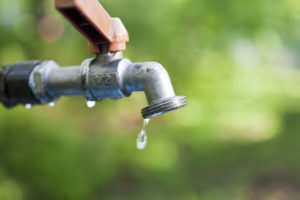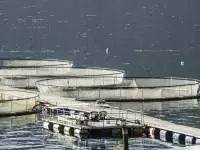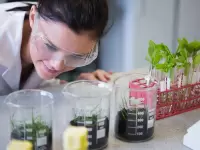
They protect existing and future water supplies by ensuring that sources are not mismanaged, over exploited or otherwise used in a manner that would be considered damaging.
What Does a Water Conservationist Do?
A water conservationist works anywhere that there is a natural water supply. Their primary role is to conserve that water supply for all users and future generations, identify potential problems to the ecology or environmental health, and mitigate them. What they do on a day-to-day basis depends on where they work.
They could work for national forests or national parks, or other government protected areas. Water supply is vital to maintaining these landscapes. They could be involved in protecting farmland from flooding, swamps from draining, human action from contaminating water supplies and ensuring that rivers, streams and lakes are not abused. They will also identify threats to the water and work with others to mitigate them. This could include environmental engineers, pollution remediation, soil and plant scientists, civil engineers (in the design or redesign of reservoirs and the placement of dams).
Increasingly, they work on a contract basis for such small businesses as private landowners to promote the ecology of their land, aid in the mitigation of erosion, and design programs to help them create or maintain a landscape type that depends or relies heavily on water. These private conservation efforts are not legally required, but the landowner needs help and advice in how to best promote their land.
Where Does a Water Conservationist Work?
Water conservationists are required everywhere. It is not surprising that we see these individuals employed in government, private industry, consultancy and the charitable sector. According to statistics, the largest employer of conservationists is Federal government (34%) - this will include water specialists. Generally, they will work for science and wildlife bodies including NOAA, NASA, EPA and the NPS. State government is the second biggest employer at 24%. The third biggest is local governments with 17%. Decisions required at local level are made at local level in line with state and local policy, not requiring Federal government involvement.
10% work for social advocacy organizations, typically charities and other third sector organizations, involved in direct conservation - societies, pressure groups and international aid organizations. They may be called to a site of a disaster (drought or flooding being the most extreme examples) to aid relief efforts.
Some may be employed as foresters or in agricultural support. Water supply and conservation is an important issue to these professionals too to ensure forest maintenance and continued food security. Some 22% of foresters (to include water specialists) work in forestry and agriculture.
What Is the Average Water Conservationist's Salary?
The median salary for water conservationists, who fall under the broader BLS category of environmental scientists and specialists, was $73,230 as of May 2020. The federal government was the highest payer, with a median salary of $103,180.*
Water Conservation Jobs & Job Description
A water conservationist is responsible for protecting current and future water supply and quality. While the day-to-day responsibilities depend on where a conservationist works, he or she may be tasked with the following job duties:
- Create, implement and coordinate work plans and strategies to restore and protect groundwater and surface water resources
- Visit areas affected by water management or quality problems to identify causes and determine solutions
- Develop knowledge of forestry, agriculture and other specialized fields of science to achieve conservation objectives
- Gather information from geographic information systems (GIS) databases or applications to formulate water conservation recommendations
- Develop experience using analytical or scientific computer software, such as Water Soil and Hydro-Environmental Decision Support System and others
- Use water quantity and quality models, including allocation of pollution loads, in watershed planning
- Develop knowledge of federal, state and local governments and their roles and responsibilities in watershed restoration and protection, local water planning and land use management
A water conservationist who has accrued several years of working experience may take on more of an advisory and planning role. His or her job duties may include:
- Advise land owners, such as farmers or ranchers, on plans, problems or alternative conservation solutions
- Advise local government and other stakeholders on water usage and conservation
- Participate on work teams to plan, develop or implement programs or policies for improving groundwater resources
- Plan natural resources conservation or restoration programs
What Is the Job Demand for Water Conservationists?
Job demand for conservation workers in general is expected to grow around 8% between 2020 and 2030. This is in line with the average growth of all jobs at present in the US. No accounting has been made for water conservation, so it is possible that this could be a growth area with the conservation industry. High profile droughts and flooding across North America has really brought to the world's attention the need for water security and proper water management. As the population grows, putting a strain on existing water supplies, we may see a greater demand throughout this period and beyond.
What Are the Education Requirements to Become a Water Conservationist?
In order to become a water conservationist, students will require a bachelor's degree at the very minimum. High school students should focus on the core sciences - biology, math, geography (or other geosciences) and environmental science where available. This will put the student in good standing to enter a degree program relevant to this type of career.
Useful degrees include environmental science, geography, forestry, agriculture science, or other earth sciences where there is an applied element. Environmental planning may be another option, but this is a growing area with few options at present. Most of these degrees should be enough for entry-level jobs and most students will not need to apply to education more advanced than a bachelor's degree. Whichever degree the student chooses, they should take relevant minors and electives to support their intended career.
Masters degrees are advisable for those wishing to get involved in a research related field such as scientific advisory, or anything requiring data analysis, research, writing and publication of academic material. Students who feel their employability will become more desirable should seek technology related skills such as geophysical survey and GIS.
Students should only consider doctorate programs should they wish to enter into a career in teaching or research (for university departments, government science bodies and charitable sector in conservation).
Water Conservation - Related Degrees
What Kind Of Societies and Professional Organizations Do Water Conservationists Have?
Water conservation is an important area due to climate change of the last decade in particular affecting water supplies across the country:
- Conservation International: Although a general conservation body, they do have a dedicated water program. They involve professionals and private donors to help conserve the world's water supply
- Soil and Water Conservation Society: This global body is engaged in both practical conservation, and education and research, into water matters. Founded in North America, they now have over 3,000 members across the world
- American Water Works Association: Water conservation requires not just public participation, but that of industry. AWWA aids water suppliers improve their processes and technology to reduce water wastage and other loss
*2020 US Bureau of Labor Statistics salary figures and job growth projections for environmental scientists and specialists reflect national data not school-specific information. Conditions in your area may vary. Data accessed September 2021.





